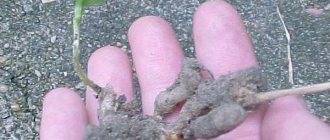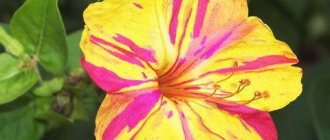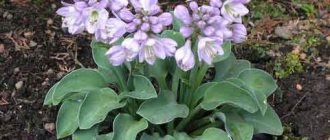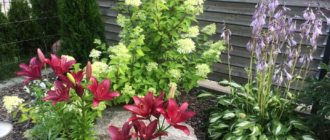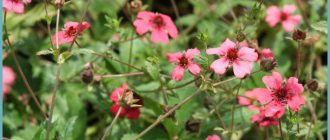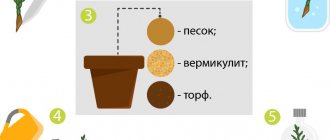Lavatera is a perennial plant with a wide color palette. The distribution area covers not only the European continent, but also Australia and North America. The flower is easy to care for and has good decorative properties. Let's take a closer look at this plant and talk about the features of planting and growing.
Description of the flower
The plant got its name thanks to the Lavater brothers. The flower was named after these talented doctors and naturalists.
The bushy, tall lavatera plant decorates flower beds and does not require special care.
Lavatera flowers can be red, lilac, or pale pink. Depending on the variety, the height varies from 50 cm to 2 m. Outwardly it resembles a small tree with a lush crown. The leaves are lobed and covered with hairs. The diameter of the bud reaches about 10 cm. Flowers can be either single or collected in tassels or spikelets.
The plant is easy to care for, so it is perfect for a novice gardener. Once cut, flowers can last in a vase for about a week.
Types and varieties
Lavatera is popularly called the dog rose. In total, 3 types of such plants are cultivated: annual, biennial and perennial. The perennial Lavatera is called Thuringian Lavatera. Popular varieties:
- Lilac Lady;
- Brandon Springs;
- Peak Beauty;
- Mont Blanc;
- Ay Catcher.
The Lilac Lady variety is distinguished by lilac-colored flowers. Brandon Springs has pink buds with crimson veins. This is one of the largest hybrids, growing up to 1.3 m in height.
Brandon Springs
Lilac Lady
Lavatera Pink Beauty has large bright pink corollas with a dark center and purple veins. Mont Blanc has white flowers with pronounced pink veins. The variety Eye Catcher is distinguished by bright pink flowers.
Pink Beauty
Mont Blanc
Eye Catcher
Hybrid varieties retain their properties in each generation, so your own seeds collected last season can be used for breeding.
Growing lavatera from seeds
Sowing
It is recommended to plant Lavatera seeds from late April to early May. It is necessary to prepare the soil in advance - dig and apply fertilizer.
Lavatera seeds
The seeds are placed to a depth of 1 to 1.5 cm. The seed is sprinkled with earth and watered. To make seedlings appear faster, the bed can be covered with film.
The first shoots begin to appear after 8-12 days.
If necessary, seedlings can be thinned out. In order for the bushes to stick to each other, it is recommended to plant 2-3 plants in one hole.
Seedling
The seedling method allows you to get a strong and tall bush. Flowering in such plants begins earlier. Sowing seeds to obtain seedlings is carried out in mid-March.
Lavatera seedlings
The planting container must have good drainage. To do this, several holes are made at the bottom of the pot. Experienced gardeners recommend using a mixture of humus and turf soil. Watering should be done using a spray bottle. The planted seeds are covered with film or glass. Shoots that have reached 4-5 cm are pricked and seated in different pots.
Planting in open ground
Planting of seedlings is carried out only after the night frosts have ended. In regions with warm winters, seedlings are planted in open ground at the end of April. In areas with frosty winters, planting takes place at the end of May.
Planting in the ground, outside, is carried out when the temperature is positive.
It is important to choose the right site. It should be a well-lit place with loose and well-drained soil. When planting tall varieties of lavatera, it is recommended to immediately make a support for it. For planting, a 20x25 cm pattern is used. This plant is optimal for the normal growth and development of bushes.
How to grow seedlings
The seedling method of growing lavatera gives early flowering.
Seed selection and preparation
Lavatera seeds remain viable for the first and second year after collection. In the third year, germination rate drops by 50%.
Photo of lavatera seeds
The seed shell is hard. For faster germination, it is recommended to soak the seeds in a growth stimulator solution. Or water the soil with it.
Soil selection and preparation
Universal soil from the store will do. At home, it is prepared from equal parts of humus and garden soil.
Selection of capacity
Young lavatera seedlings do not like picking. For sowing, it is recommended to use peat tablets or disposable containers (cups, seedling cassettes). Holes must be made at the bottom.
You can sow in a box, placing the seeds at a distance of at least 5 cm from each other.
Before sowing, containers must be washed with a solution of potassium permanganate.
Direct sowing
Sowing lavatera seeds is not a difficult process:
- Place a drainage layer of pebbles and sand on the bottom of the washed container.
- Fill in the prepared soil.
- Make a depression in the cup, and grooves in the box no more than 1 cm deep at a distance of 5 cm from each other.
- Spill soil in the depressions.
- Spread out the dry seeds.
- Sprinkle with dry soil in a 1 cm layer.
- Moisten the top layer of soil.
- Cover with plastic or a piece of glass and place in a warm place.
Crops must be ventilated and condensation removed.
Caring for perennial lavatera
Watering
Soil moistening is carried out only during dry periods, since the plant does not tolerate high humidity.
Lavatera bushes should be watered only when necessary.
In summer, flowers are watered once a week. On particularly dry days, spraying can be carried out. Water should only fall on the leaves and stems. Wet buds quickly wither and fall off.
Feeding and fertilizer
On poor soil, fertilizing is carried out once every 5-8 weeks. Periodically it is necessary to add a mixture of urea and nitrophoska. To prepare the fertilizer, take 10 liters of water and 1 tbsp. dry mixture.
Fertilizing is carried out immediately after planting the plant and during the formation of the first buds.
Plant care after flowering, preparation for winter
Perennial lavatera varieties must be properly prepared for wintering. The plant tolerates cold quite well, especially if there is a large layer of snow.
Lavatera perennial can be left in the soil for the winter
To protect the flower from frost, it is recommended to remove all remnants of the buds and bend the stem to the ground. For shelter, you can use dry leaves or spruce branches.
When to plant seedlings in open ground?
Seedlings are planted when the threat of return frosts has passed and warm weather has settled. By this time, the flower seedlings should have at least 4 true leaves.
In the southern regions this may be the end of April - beginning of May. A little further north, in the Black Earth Region - in mid-May. In the coldest regions of our country, the Urals and Siberia, transplantation should be carried out closer to summer.
IMPORTANT! Lavatera should be planted on the sunny side. The flower loves light, loose soil with a good drainage system. Therefore, if your groundwater lies close to the surface, take care of drainage.
Diseases and pests
Lavatera has fairly good immunity against diseases and pests. Sometimes a flower is affected by garden aphids. To get rid of such a pest, it is recommended to use systemic preparations of actara or agents of combined action with actellik.
Signs of lavatera rust damage
When affected by rust, the plant becomes covered with brown, brown or yellow spots. In this case, it is necessary to remove all the affected parts, and treat the plant itself with topaz, Bordeaux mixture or cuproxate. If the flower is completely affected by rust, then it is best to simply remove it from the area and burn it.
Other uses of lavatera
The perennial Thuringian Lavatera is used as a medicinal plant in folk medicine. The roots of the plant contain a lot of mucus and vitamin C, so in terms of its pharmacological properties, Lavatera is close to marshmallow.
Lavatera is also grown for use in folk medicine
A decoction of the roots is used for colds, coughs, hoarseness, various gastrointestinal ailments and women's diseases. An infusion of the root is used as an anti-inflammatory agent for dermatitis. For rheumatic and neuralgic pain, the leaves of the plant are used. Poultices from the leaves are used for purulent skin lesions, boils, and lichen.
Use in landscape design
The flower is great for single planting and creating compositions. Lavatera can be used in mixborders. The plant goes well with iris, verbena and sage. On lawns, such a flower can be a bright accent.
Lavatera looks good both in single plantings and in group plantings
Tall varieties of Lavatera are often used to decorate the trunk part of the tree. Living screens look impressive; they help hide outbuildings or simply unattractive parts of the garden. Due to the wide range of colors, perennial lavatera will add more contrast to the flower bed.
Lavatera will decorate any flower bed
It is enough to plant a mix of different varieties to get an interesting and vibrant composition. White lavatera goes well with purple petunia or ageratum. Pink flowers - with iris, verbena or sage.
Perennial lavatera not only has good decorative properties, but can also be used as a medicinal plant. The flower is easy to care for, even a novice gardener can handle it.
Combination with other plants
Lavatera can be combined with a huge number of other plants that grow in traditional flower beds. Lavatera with pink flowers looks good in combination with crops that bloom with blue and purple flowers:
- sage;
- verbena;
Lavatera on a personal plot
- brachycoma;
- iris;
- delphinium.
White varieties of lavater are universal and go with almost any color, but look especially good with lilac petunia and blue ageratum. But the Lavatera variety “Ruby Carpet” looks great with Lanstera
